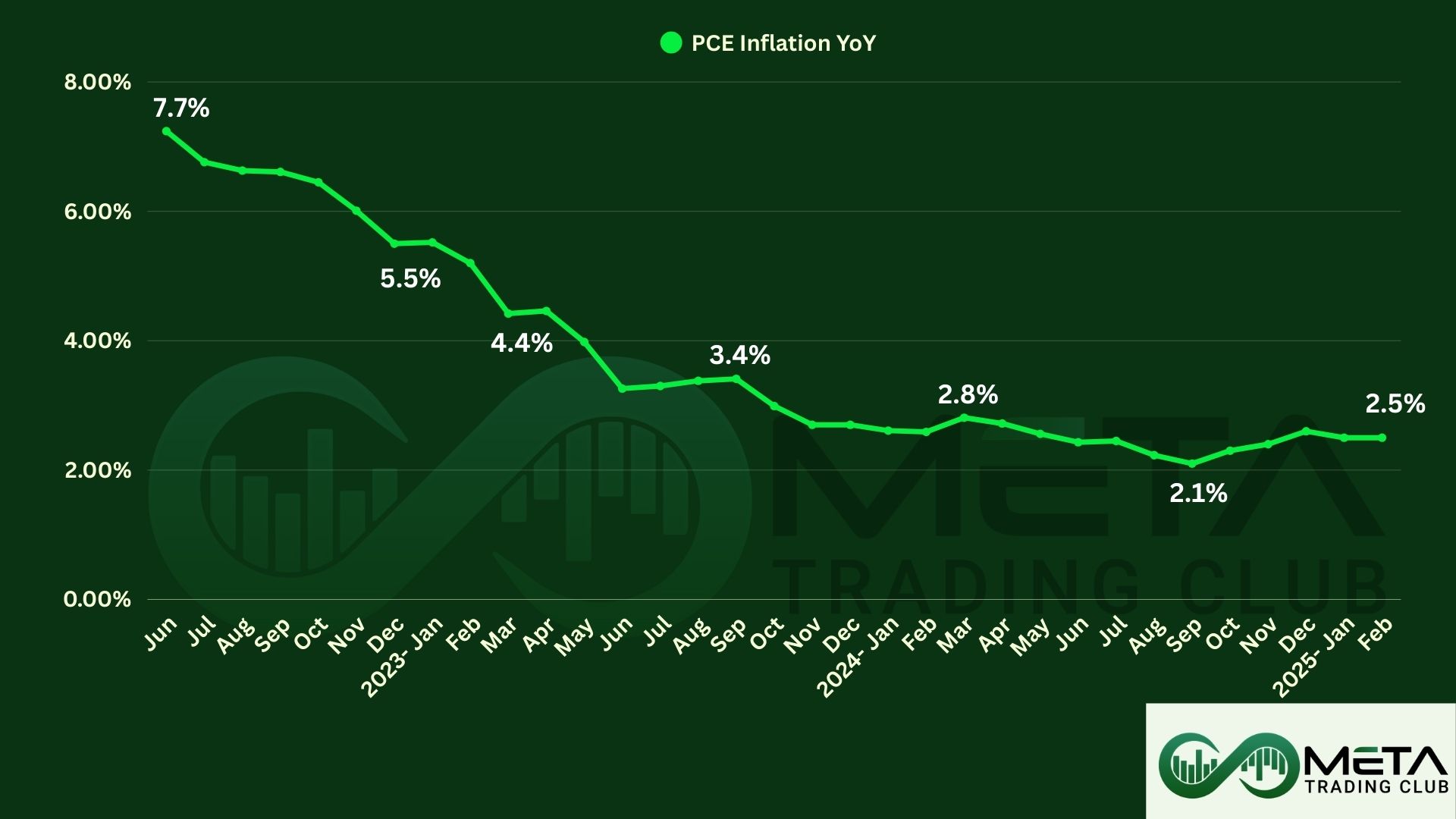Swing trading is a dynamic trading strategy that aims to capture medium-term gains in financial markets. Also, swing trading involves holding positions for several days. This approach allows traders to take advantage of market “swings” or price movements, making it a flexible and potentially profitable strategy. Whether you’re a beginner trader to get started or an experienced trader seeking to refine your strategies, this guide will provide you with essential insights and strategies to succeed in swing trading.
Table of Contents
What Is Swing Trading?
Swing traders aim to capture short- to medium-term gains in assets such as stocks, options, futures, Forex, crypto currencies and other securities. Unlike day trading, which involves rapid buying and selling within a single day, swing trading involves holding positions for several days to weeks. This approach allows traders to take advantage of market “swings” or price movements, making it a potentially profitable strategy.
Swing traders primarily rely on technical analysis to identify trading opportunities, using tools such as chart patterns, moving averages, and momentum indicators. They may also use fundamental analysis to support their decisions. The goal is to capture a chunk of a potential price move, entering a position when the price is likely to move in a favorable direction and exiting once the desired profit is achieved.
Swing trading sits between day trading and position trading in terms of holding periods and profit potential. It requires a good understanding of market trends and the ability to analyze price movements effectively.
How Does Swing Trading Work?
Swing trading works by capturing medium-term gains in financial markets. Here’s a step-by-step breakdown of how it typically works:
- Identify Trading Opportunities: Swing traders use technical analysis to find potential trades. They look for patterns, trends, and signals in price charts, such as moving averages, support and resistance levels, and momentum indicators.
- Analyze Market Conditions: Understanding the broader market context is crucial. Swing traders assess whether the market is in an uptrend, downtrend, or sideways movement. This helps them decide whether to go long (buy) or short (sell).
- Enter the Trade: Once a potential trade is identified, the trader enters a position. This could involve buying a stock, ETF, or other financial instrument if they expect the price to rise or shorting it if they expect the price to fall.
- Set Stop-Loss and Take-Profit Levels: To manage risk, swing traders set stop-loss orders to limit potential losses if the trade goes against them. They also set profit target levels to lock in gains once the price reaches a certain target.
- Monitor the Trade: Swing traders keep an eye on their positions, adjusting their stop-loss and profit target levels as needed. They may also use trailing stops to protect profits as the price moves in their favor.
- Exit the Trade: The trade is closed when the price hits the profit target, the stop-loss is triggered, or the trader decides to exit based on new market information or changes in the technical indicators.
- Review and Learn: After closing a trade, swing traders review their performance to learn from their successes and mistakes. This helps them refine their strategies and improve future trades.
Swing trading requires a good understanding of technical analysis, market trends, and risk management. Also, it’s a flexible strategy that can be adapted to different market conditions.
Swing Trading Strategies
Swing trading strategies aim to capture short- to medium-term gains by taking advantage of market “swings” or price movements. You can use strategies we explain in day trading for swing trading too. Strategies such as Momentum trading, Breakout trading, Range trading, Contrarian trading and Pullback trading. Also,here are some other popular swing trading strategies:
Gap and Go Swing Trading Strategy
The Gap and Go strategy is a popular trading approach that can be adapted for swing trading, focusing on capturing significant price movements that occur due to overnight news or events.
The Gap and Go strategy involves identifying stocks that “gap up” or “gap down” at the market open. A gap occurs when a stock opens significantly higher or lower than its previous closing price, often due to news events, earnings reports, or other catalysts. This gap represents a substantial change in supply and demand, leading to potential trading opportunities.
How to Use Gap and Go Strategy in Swing Trading?
Pre-Market Analysis:
- Use Scanners: Utilize pre-market scanners to identify stocks with significant gaps and high trading volume. Look for positive catalysts such as earnings reports, news releases, or analyst upgrades.
- Volume Confirmation: Ensure that the stock has substantial pre-market volume, indicating strong interest and potential for continuation.
Identify the Gap:
- Gap Up: A stock opens higher than its previous close.
- Gap Down: A stock opens lower than its previous close.
Focus on stocks with notable percentage gaps, as these are more likely to continue moving in the direction of the gap.
Confirm the Trend:
- Technical Indicators: Use indicators like Moving Averages, Relative Strength Index (RSI) or MACD to confirm the trend direction.
- Price Action: Observe the stock’s price action after the market opens to ensure it continues in the direction of the gap.
Enter the Trade:
- Entry Point: Enter the trade once the trend is confirmed. For a gap up, buy the stock; for a gap down, consider shorting it.
- Risk Management: Set a stop-loss order below the gap for a long position or above the gap for a short position to manage risk. Set Stop-Loss and Take-Profit Levels:
- Stop-Loss: Place a stop-loss order to limit potential losses if the trade goes against you.
- Profit target: Determine your take-profit level based on the stock’s potential price movement and your reward-risk ratio.
Monitor and Adjust:
- Regular Monitoring: Keep an eye on the stock’s performance and adjust your stop-loss and take-profit levels as needed.
- Holding Period: Swing traders typically hold positions for several days to weeks, so regular monitoring is essential.
Example
Imagine you identify a stock that gaps up 6% in the pre-market due to a positive earnings report. The stock opens at $169, up from the previous close of $159. You confirm the uptrend using moving averages and decide to enter a long position at $169. You set a stop-loss at $158 (below the gap) and a profit target level at $180. Over the next few days, the stock continues to rise, hitting your profit target, and you exit the trade with a profit.
Trend Continuation Trading Strategy
A Trend Continuation Trading Strategy is based on the concept that a market trend, once established, is likely to continue. This strategy involves identifying continuation patterns, which signal the likelihood of a trend persisting.
A Trend Continuation Trading Strategy aims to capitalize on the ongoing trend by entering trades during temporary pauses or consolidations, expecting the trend to resume. This approach relies heavily on technical analysis to identify specific patterns that indicate the trend is likely to continue.
Popular Continuation Patterns
Flags and Pennants:
- Flags: These are small rectangular patterns that slope against the prevailing trend. They indicate a brief consolidation before the trend resumes.
- Pennants: Similar to flags but shaped like small symmetrical triangles. They form after a strong price movement and signal a continuation of the trend.
Triangles:
- Ascending Triangle: Forms in an uptrend with a horizontal resistance line and an upward-sloping support line. A breakout above resistance signals trend continuation.
- Descending Triangle: Forms in a downtrend with a horizontal support line and a downward-sloping resistance line. A breakout below support signals trend continuation.
Rectangles:
These patterns form when the price moves sideways between parallel support and resistance levels. A breakout from the rectangle in the direction of the prevailing trend indicates continuation.
Cup and Handle:
This bullish continuation pattern resembles a cup with a handle. The cup forms a rounded bottom, and the handle is a small consolidation before the price breaks out to continue the uptrend.
How to Use Trend Continuation Patterns
- Identify the Pattern: Use technical analysis tools to spot continuation patterns on price charts. Look for patterns like flags, pennants, triangles, and rectangles during an ongoing trend.
- Confirm the Trend: Ensure the overall trend is strong and likely to continue. Use indicators like moving averages, RSI, or MACD to confirm the trend’s strength.
- Enter the Trade: Enter the trade when the price breaks out of the continuation pattern in the direction of the prevailing trend. For example, buy when the price breaks above a flag or pennant in an uptrend.
- Manage Risks: Place a stop-loss order below the pattern for long positions or above the pattern for short positions to manage risk. Set take-profit levels based on the pattern’s size and the expected price movement.
- Monitor and Adjust: Keep an eye on the trade and adjust your stop-loss and take-profit levels as needed. Continuation patterns can provide multiple entry points, so be prepared to re-enter if the trend continues.
By understanding and utilizing trend continuation patterns, traders can enhance their ability to capitalize on ongoing trends and improve their trading performance. the risk of making poor trades.
Example
Consider the Nvidia (NVDA) share:
- Initial Uptrend: The stock price rises from $46 to $96, forming the flagpole.
- Flag Pattern: The price consolidates between $76 and $96, forming a flag.
- Breakout: The price breaks above $88, signaling a continuation of the uptrend.
- Entry Point: Buy at $89 (confirmation of breakout).
- Stop-Loss: Set at $75 (below the flag).
- Profit Target: Set at $88 + $(96-46) = $138 (flagpole height added to breakout point).
By following this strategy, you can capitalize on the continuation of the uptrend after the brief consolidation phase. This approach helps you enter trades with a clear plan and manage risk effectively.
Flat EMA Trading Strategy
The Flat EMA (Exponential Moving Average) Trading Strategy is a technique used to identify periods of low volatility and potential breakout points in the market. This strategy focuses on the EMA’s behavior when it flattens out, indicating a consolidation phase before a significant price movement.
How to Use the Flat EMA?
Identify the Flat EMA:
- Use a specific period EMA (such as 50-day EMA) on your price chart.
- Look for periods where the EMA flattens out, indicating that the price is consolidating and there is no clear trend.
Confirm Consolidation:
Ensure that the price is moving sideways and the EMA is relatively flat. This indicates a period of low volatility and potential buildup for a breakout.
Monitor for Breakout:
Watch for a breakout above or below the consolidation range. A breakout above the range suggests a potential uptrend, while a breakout below indicates a potential downtrend.
Enter the Trade:
- Enter a long position if the price breaks above the consolidation range and the EMA starts to slope upwards.
- Enter a short position if the price breaks below the consolidation range and the EMA starts to slope downwards.
Manage the risks:
- Place a stop-loss order just below the consolidation range for long positions or just above the range for short positions.
- Set a profit target based on the expected price movement, often using the height of the consolidation range as a guide.
Example
Imagine you are analyzing the stock of Tesla (TSLA) using a 50-day EMA:
- Identify the Flat EMA: You notice that the 50-day EMA has been flat for the past two weeks, indicating a consolidation phase.
- Confirm Consolidation: The stock price has been moving sideways between $169 and $188.
- Monitor for Breakout: You observe a breakout above $189 with confirmation by a strong candle, suggesting a potential uptrend.
- Enter the Trade: You enter a long position at $89, as the EMA starts to slope upwards.
- Manage Risks: You place a stop-loss order at $169 (below the consolidation range) and set a profit target at $209, based on the height of the consolidation range.
By following this strategy, you aim to capitalize on the breakout and ride the new trend while managing your risk effectively.
What You’ll Need to Execute Swing Trades
To successfully execute swing trades, you’ll need a combination of tools, knowledge, and a disciplined approach. Here’s a detailed list of what you’ll need:
1. Trading Account
- Brokerage Account: Open a trading account with a reputable online broker that offers low fees, a user-friendly platform, and access to the markets you want to trade.
2. Capital
- Initial Investment: Ensure you have sufficient capital to start trading. Swing trading requires upfront capital to enter positions and manage risk effectively.
3. Charting Software
- Technical Analysis Tools: Use charting software that provides access to various technical analysis tools, such as moving averages, trendlines, and indicators like RSI and MACD.
4. Trading Plan
- Strategy: Develop a clear trading plan that outlines your strategy, including entry and exit criteria, risk management rules, and position sizing.
- Back testing: Test your strategy on historical data to ensure its effectiveness before applying it in live trading.
5. Risk Management
- Stop-Loss Orders: Use stop-loss orders to limit potential losses on each trade.
- Position Sizing: Determine the appropriate size for each trade based on your risk tolerance and account size.
6. Market Knowledge
- Technical Analysis: Gain a solid understanding of technical analysis to identify trading opportunities and make informed decisions.
- Fundamental Analysis: While swing trading primarily relies on technical analysis, understanding fundamental factors can provide additional insights3.
7. Trading Journal
- Record Keeping: Maintain a trading journal to track your trades, analyze performance, and identify areas for improvement.
8. Discipline and Patience
- Emotional Control: Stay disciplined and avoid making impulsive decisions based on emotions.
- Patience: Be patient and wait for the right trading setups that align with your strategy.
Example of Swing Trading Setup
Imagine you are planning to swing trade a stock using a moving average crossover strategy:
- Brokerage Account: You open an account with a broker that offers low fees and a robust trading platform.
- Capital: You allocate $10,000 for swing trading.
- Charting Software: You use a charting platform that provides access to moving averages and other technical indicators.
- Trading Plan: Your strategy involves buying when the 100-day moving average crosses above the 200-day moving average and selling when it crosses below.
- Risk Management: You set a stop-loss order 5% below your entry price and limit each trade to 2% of your total capital.
- Market Knowledge: You regularly analyze charts and stay updated on market trends.
- Trading Journal: You record each trade, noting the entry and exit points, reasons for the trade, and the outcome.
- Discipline and Patience: You stick to your plan and avoid making trades based on hunches or emotions.
By following these steps and utilizing the necessary tools, you can effectively execute swing trades and work towards achieving your trading goals.
Advantages of Swing Trading
Swing trading offers several advantages that make it an appealing strategy for many traders. Here are some key benefits:
- Maximizing Profit Potential: Swing trading aims to capture significant price movements over a few days to weeks, allowing traders to take advantage of midt-term market fluctuations.
- Reduced Time Commitment: Unlike day trading, which requires constant monitoring of the markets, swing trading involves less frequent trades. This makes it suitable for those who cannot dedicate their entire day to trading.
- Flexibility in Capital Management: Swing traders can manage their capital more flexibly, as they do not need to maintain large positions for extended periods. This allows for better risk management and the ability to diversify investments.
- Adaptability to Market Conditions: Swing trading can be effective in various market conditions, whether the market is trending up, down, or sideways. This versatility helps traders find opportunities in different environments.
- Potential for Higher Returns: By capturing medium-term price swings, swing traders can potentially achieve higher returns compared to long-term investing, especially when compounding gains over multiple trades.
- Avoiding Extended Drawdowns: Since swing trades are held for shorter periods, traders can avoid the prolonged drawdowns that can occur with long-term positions.
These advantages make swing trading a popular choice for traders looking to balance profitability with a manageable time commitment.
Disadvantages of swing trading
Swing trading, while advantageous in many ways, also comes with its own set of challenges. Here are some key disadvantages:
- Overnight and Weekend Risk: Holding positions overnight or over the weekend exposes swing traders to the risk of price gaps due to news events or market sentiment changes. These gaps can lead to significant losses if the market moves against the trader’s position.
- Abrupt Market Reversals: Swing traders can be caught off guard by sudden market reversals, which can result in substantial losses. These reversals can be triggered by unexpected news or economic events.
- Missed Long-Term Trends: By focusing on short- to medium-term price movements, swing traders may miss out on longer-term trends and the potential gains associated with them.
- Market Timing Difficulty: Successfully timing the market to enter and exit trades at the right moments can be challenging. Misjudging the timing can lead to missed opportunities or losses.
- Less Excitement: For traders seeking constant action and an adrenaline rush, swing trading might not be as exciting as day trading, which involves more frequent trades and quicker decision-making.
Understanding these disadvantages can help traders better prepare and manage the risks associated with swing trading.
Final Words
Swing trading offers a unique blend of flexibility and potential profitability, making it an attractive strategy for many traders. By holding positions for several days to weeks, swing traders can capitalize on market “swings” or price movements that are often missed by day traders. The key to success in swing trading lies in thorough technical analysis, disciplined risk management, and staying informed about market trends.
Also, swing trading can be a rewarding approach for those willing to invest the time and effort to master its techniques. Whether you’re new to trading or looking to enhance your existing strategies, understanding the fundamentals of swing trading can significantly improve your chances of success. So, boost your trading skills by participating in our Incubator program. Remember, the market is always evolving, so continuous learning and adaptation are crucial.
FAQs
Yes, swing trading can be profitable if you accurately time your entries and exits and manage risks effectively. However, it requires discipline and a solid understanding of technical analysis.
Swing trading involves holding positions for several days to weeks to capitalize on expected price moves. Traders use technical analysis to identify entry and exit points, aiming to profit from short- to medium-term market swings.
An example of swing trading is buying a stock like Apple (AAPL) when it breaks above a resistance level and holding it for a few days or weeks until it reaches a new high. The trader then sells the stock to capture the profit from the price swing.
Beginners can try swing trading, but it’s essential to start with a solid understanding of technical analysis and risk management. It’s advisable to practice with a demo account first to gain experience without risking real money.
It’s possible to become wealthy through swing trading, but it requires significant skill, discipline, and experience. Consistent profitability is challenging and involves managing risks and adapting to market changes.

















